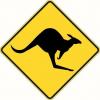I have that bench top Rockwell (Delta on the hood). My dad bought it new back in the 50s. Made in Pittsburgh. For all intents and purposes, 0” runout. It is a fantastic machine and it sits in the metal shop section. I also have a Nova Voyager and it is a great drill head with a mediocre table / adjustment set up. There is no reason in the world why they couldn’t have designed that drill press all the way to the floor for that kind of money. They stopped at the top. When you release the lock on the table, it actually drops (out of Square with the column) quite measurably. To beef up that casting wouldn’t have added $10 to the cost of manufacture. The drill press I got rid of to make room for the Voyager had 0” deflection when the clamp was released. Unknown brand but made probably in the 40s. It did have too much runout for me (maybe a slightly bent quill) and I really like the speed selection on the Voyager.




 Reply With Quote
Reply With Quote







